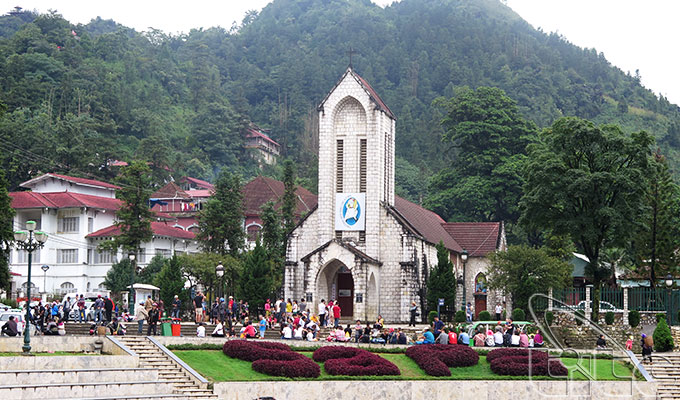The PM has approved a master plan for the development of Lao Cai Province’s Sa Pa National Tourism Area until 2030, with the goal of developing unique and high-quality tourism products and attracting about 5.2 million of visitors.

According to the plan, the Sa Pa National Tourism Area is to cover the entirety of Sa Pa District, including a 1,500-hectare core region devoted to tourism development.
It will feature a Sa Pa Tourism City and four tourism subdivisions, namely Ban Khoang–Ta Giang Phinh (in Ban Khoang and Ta Giang Phinh Communes), Ta Phin (in Ta Phin Commune), Ta Van–Seo My Ty (in Ta Van Commune) and Thanh Kim (in Thanh Kim Commune), with connections to Bat Xat District.
Sa Na is scheduled to step towards developing three major types of tourism products, including specialised tourism products, sightseeing tourism products and ecotourism products associated with resorts. The production of specialised tourism products will be accelerated with the aim of enabling visitors to enjoy the climate, natural landscape and cultures of the native peoples.
Auxiliary tourism products include spiritual tourism associated with the system of pagodas and temples in the Fansipan Cable Car Recreation Complex; spiritual relic sites in the region; tourism associated with traditional cultural festivals; commercial tourism associated with sightseeing and shopping at trade centres and traditional markets; tourism associated with trade activities in border areas; ecosystems associated with environmental education; and adventure sport tourism.
With regards to the organisation of tourism development spaces, Sa Pa will develop an ecosystem associated with environmental education at Hoang Lien National Garden in Sa Pa District and Bat Xat natural conservation area; community tourism sites at minority villages; and tourist attractions including Muong Hoa Valley, Bac Waterfall, Tinh Yeu (“Love”) Waterfall, Ta Phin Cave, Thien Sinh Bridge, Lung Po Flagpole and Muong Vi Cave.
The master plan aims for Sapa to meet the criteria for recognition as a national tourism area by 2020. It also aims to develop the Sa Pa National Tourism Area into a national- and international-level resort and cultural tourism centre by 2030, with a modern and synchronous infrastructure system; diverse, unique and high-quality tourism products; and high competitiveness with other countries.
The Sa Pa Tourism Area is planned to welcome about two million arrivals in 2020 and 5.2 million arrivals in 2030.